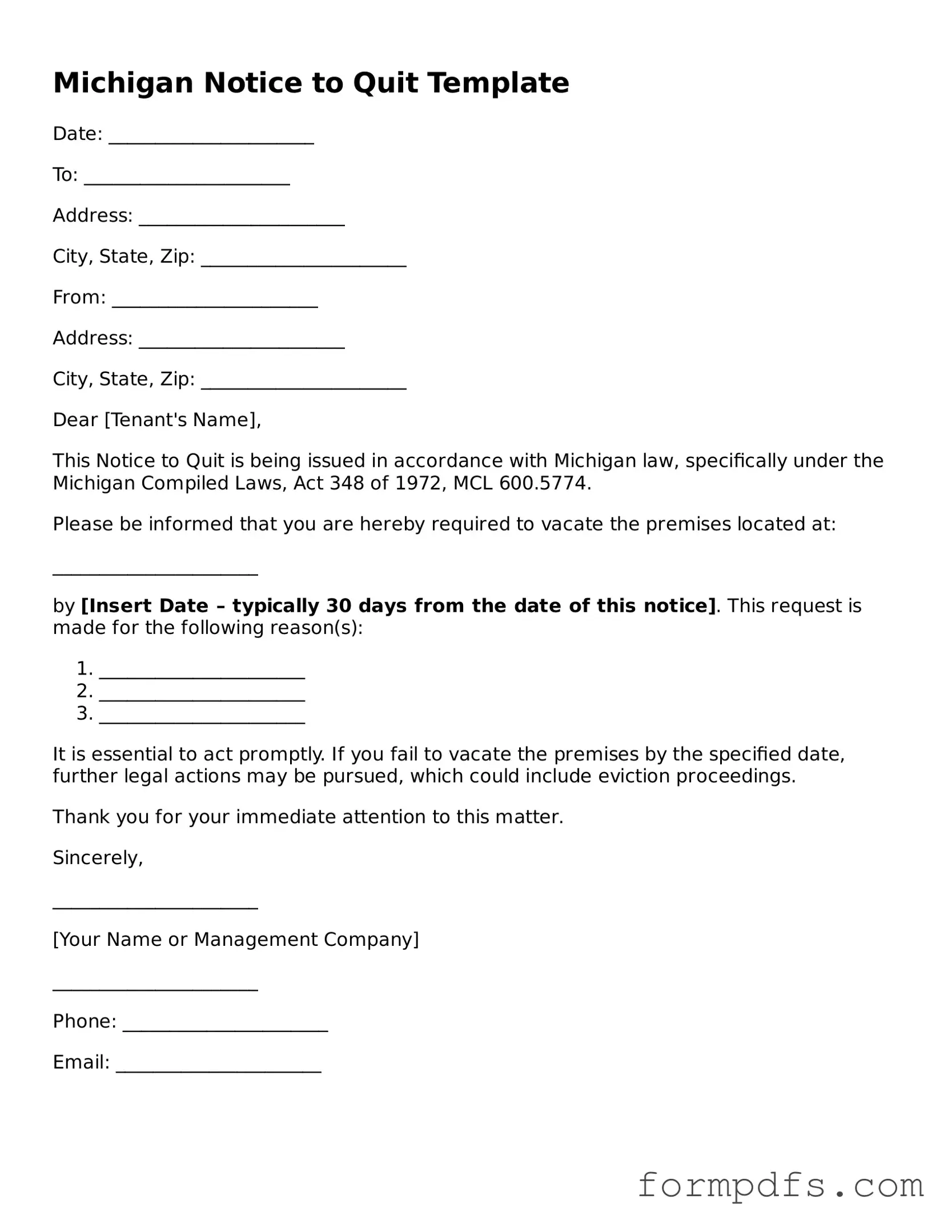What is the Michigan Notice to Quit form?
The Michigan Notice to Quit form is a legal document used by landlords to notify tenants that they must vacate the rental property. This notice typically arises when a tenant has violated the terms of their lease agreement, failed to pay rent, or when the landlord wishes to terminate a month-to-month rental agreement. The form serves as an official communication and outlines the reasons for eviction, as well as the timeframe in which the tenant must leave the premises.
How long does a tenant have to respond to a Notice to Quit?
The time frame for a tenant to respond to a Notice to Quit can vary based on the specific circumstances. Generally, if the notice is related to non-payment of rent, tenants may have seven days to pay the overdue rent or vacate the property. In cases of lease violations, the notice period is typically 30 days. It is crucial for tenants to carefully read the notice, as it will specify the required actions and deadlines.
What happens if a tenant does not comply with the Notice to Quit?
If a tenant fails to comply with the Notice to Quit, the landlord may initiate eviction proceedings. This process often involves filing a complaint in the local court. The court will then schedule a hearing where both the landlord and tenant can present their cases. If the court rules in favor of the landlord, a judgment may be issued, allowing the landlord to proceed with the eviction, often with the assistance of law enforcement.
Can a tenant contest a Notice to Quit?
Yes, a tenant has the right to contest a Notice to Quit. If a tenant believes the notice is unjust or that they have not violated the lease terms, they can present their case in court. It is advisable for tenants to gather evidence, such as payment records or correspondence with the landlord, to support their position. Legal assistance may also be beneficial in navigating the eviction process.
Is the Michigan Notice to Quit form required to be notarized?
No, the Michigan Notice to Quit form does not need to be notarized. However, it should be properly filled out and delivered to the tenant in accordance with Michigan law. It is recommended that landlords keep a copy of the notice for their records and consider using a method of delivery that provides proof, such as certified mail or personal delivery, to ensure compliance with legal requirements.
